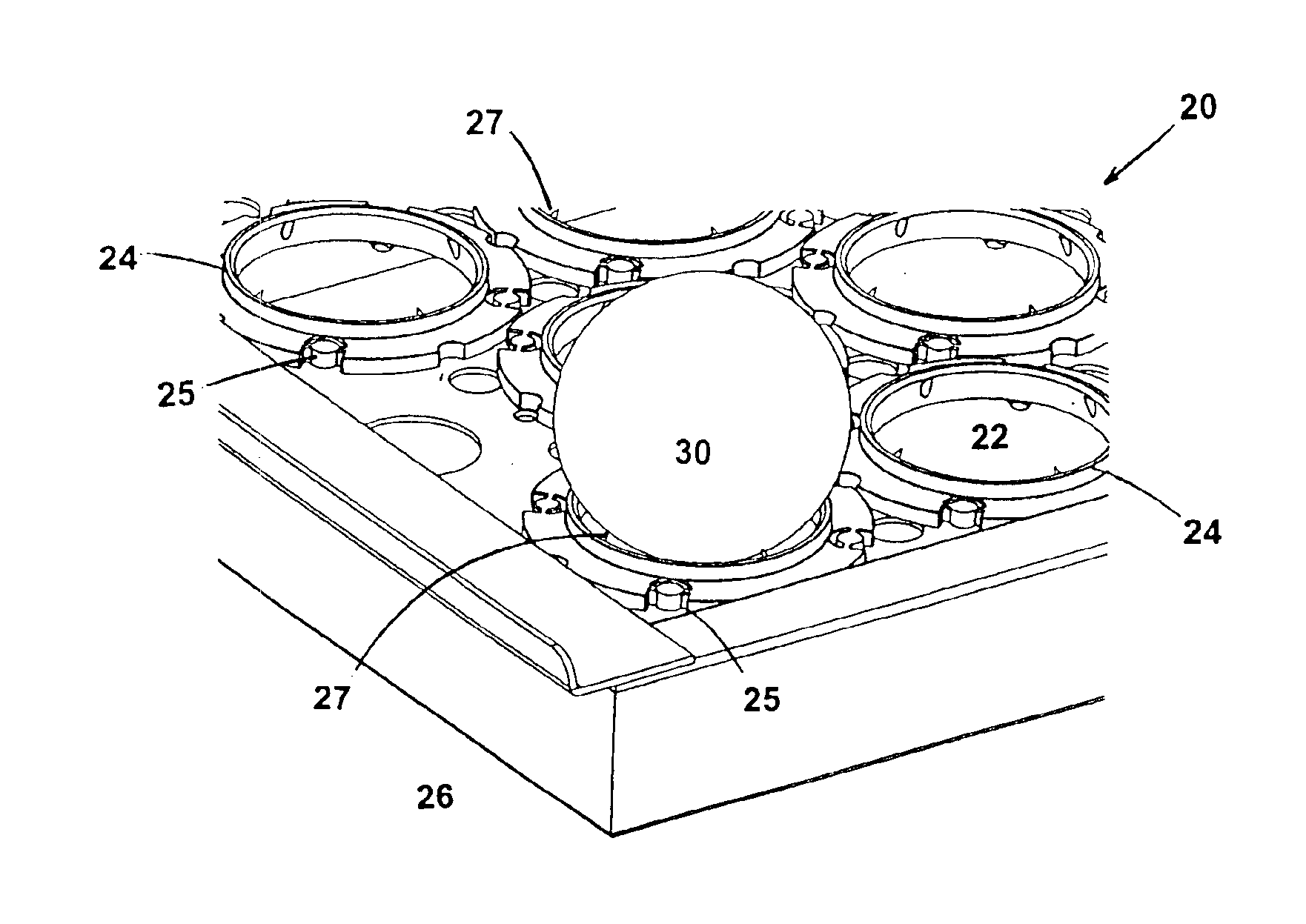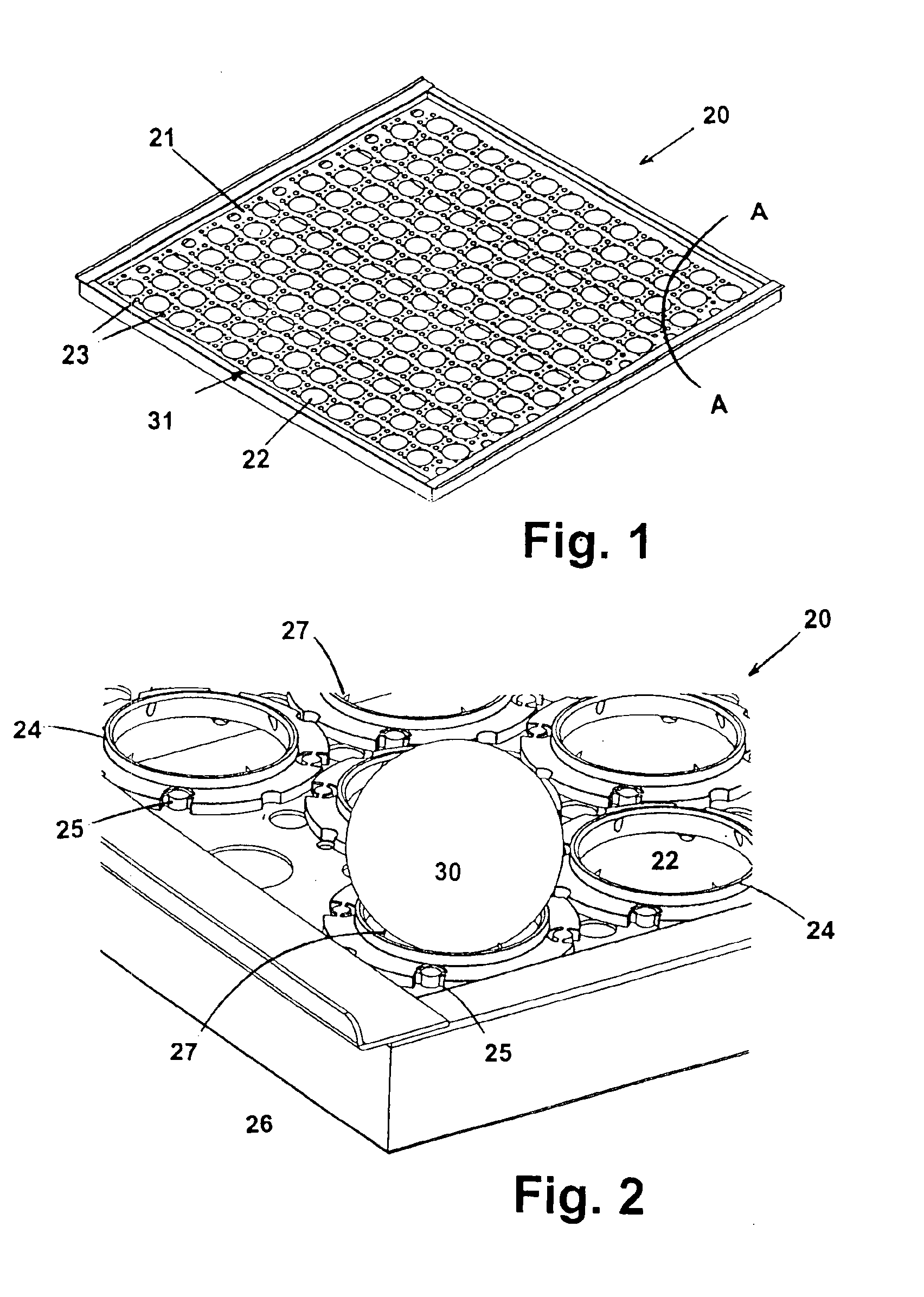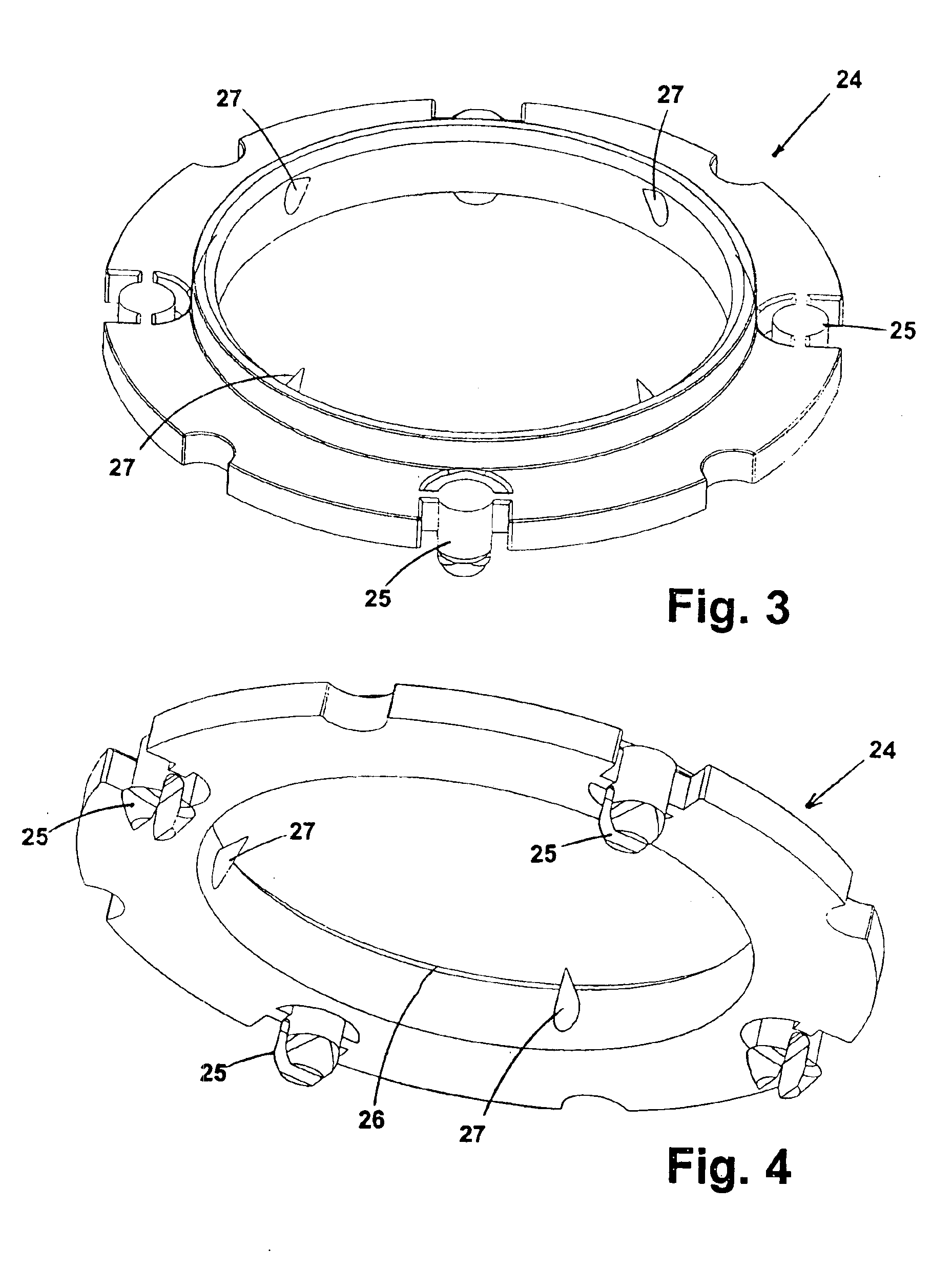Heating of golf balls prior to painting
a golf ball and heating technology, applied in the manufacturing of tools, superimposed coating process, liquid/solution decomposition chemical coatings, etc., can solve the problems of golf balls being susceptible to hitting any of a number of hard, abrasive surfaces, time-consuming, etc., to reduce the flow of paint, reduce the blemishes of golf balls, and reduce the blemishes
- Summary
- Abstract
- Description
- Claims
- Application Information
AI Technical Summary
Benefits of technology
Problems solved by technology
Method used
Image
Examples
Embodiment Construction
A golf ball may comprise a one-piece construction or it may include several layers including a core and an outer cover surrounding the core. The outer surface of the cover may include one or more pigmented or non-pigmented protective coatings. The outer cover of the golf ball is preferably made of any number of thermoplastic or thermosetting materials, including thermoplastic resins such as ionomeric, polyester, polyethrester resins; thermoplastic or thermoset polyurethanes; natural or synthetic rubbers such as balata (natural or synthetic) or polybutadiene; or some combination of the above. This list, however, is merely illustrative and shall not limit the types of materials suitable for use in the golf balls and methods of the present invention.
The present invention provides for a method for heating a golf ball cover prior to applying a coat of primer or paint. This is in contrast to conventional methods of applying heat after applying the paint. It is desirable to accelerate the ...
PUM
| Property | Measurement | Unit |
|---|---|---|
| temperature | aaaaa | aaaaa |
| temperature | aaaaa | aaaaa |
| temperature | aaaaa | aaaaa |
Abstract
Description
Claims
Application Information
 Login to View More
Login to View More - R&D
- Intellectual Property
- Life Sciences
- Materials
- Tech Scout
- Unparalleled Data Quality
- Higher Quality Content
- 60% Fewer Hallucinations
Browse by: Latest US Patents, China's latest patents, Technical Efficacy Thesaurus, Application Domain, Technology Topic, Popular Technical Reports.
© 2025 PatSnap. All rights reserved.Legal|Privacy policy|Modern Slavery Act Transparency Statement|Sitemap|About US| Contact US: help@patsnap.com



